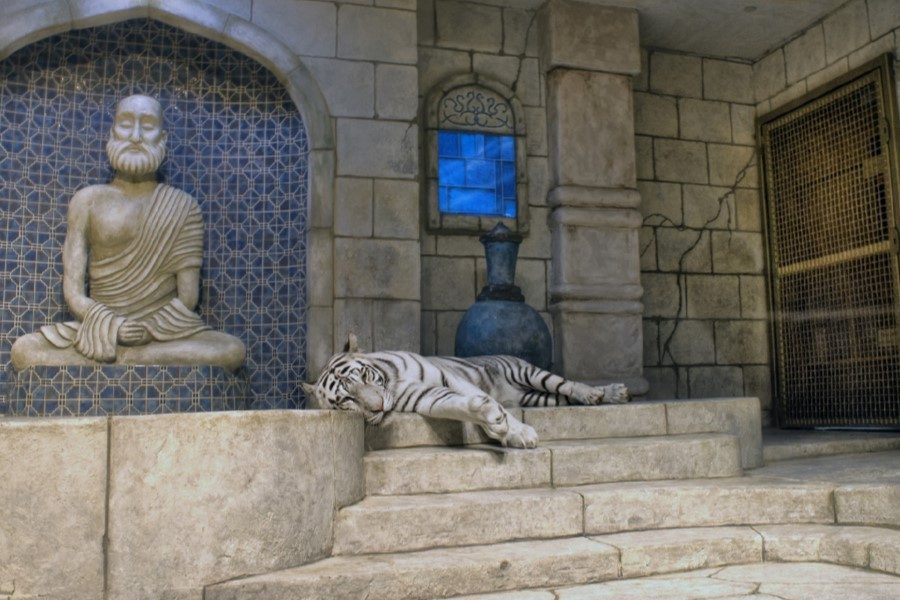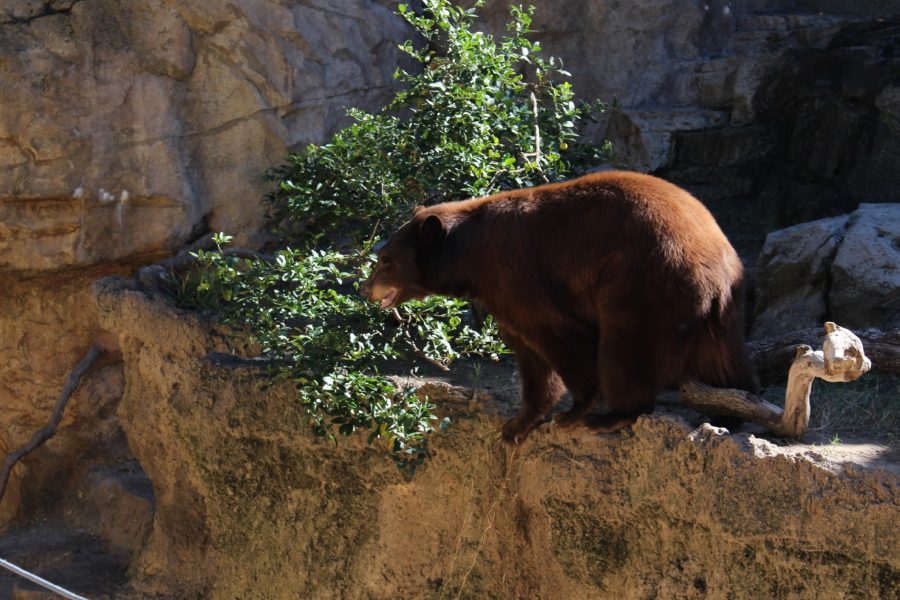Unethical practices fuel captive wildlife industry
June 3, 2017
Taiji, Japan.
Every year, from September to March, around 23,000 dolphins are slaughtered for their meat. The few captured are sent to aquariums around the world to be put on display or sold to “Swimming with Dolphins” programs.
Either way, the methods used to hunt and capture the dolphins are unethical and immoral. Metal sticks drive them to a cove where they are either murdered by a spike to the spine or chosen from the masses and taken to aquarium pools.
Humans intervened with their natural lives, but not all captive animals have this backstory. Some were born into it; some were injured and never re-assimilated. But circumstances that put these cetaceans in parks, swimming programs, aquariums around the world and even in the Marine Mammal Research program in Hawaii prompts questions about the source and care of other captive wildlife.
Even though Kina, the false killer whale in Hawaii, is helping with research, according to dolphinproject.net, she is a Taiji dolphin, captured at Iki Island, and the money they paid for her helped to fuel the slaughter industry there. The dolphins that were bought by parks and swimming programs do the same, but the source of their money and interest in dolphins comes from paying visitors to these places.
Houston, Texas
They haven’t seen the light of the sun or felt real earth since 2005. Their white and black stripes are toted as exotic and special for display, perpetuating the cycle of others inbreeding similar tigers. The results are horrific, with mangled faces and mutated features.
These white tigers live in the Downtown Aquarium of Houston. The four of them live, out of the public eye, in small cages comprised of concrete and metal. When not in their cages, two of them at a time can be seen lounging about the sanctuary. Their entertainment consists of a fake tree, an arrangement of rocks and a pool.
While the Downtown Aquarium website cites the tree as multiple levels for tigers to climb, and use that as an example of how they do not deprive the animals, tigers seldom climb trees in the wild. They usually only climb when being chased by wild dogs or when they’re pursuing their prey. Even if they did climb trees in the wild, this is still not a sufficient amount of stimulation for animals who usually cover over 40 miles of land. If they’re the lucky chosen pair, at lunch their handlers place meat around the pen and they can run to the pieces, the closest they get to hunting in all of their lives at the aquarium.
If not the lucky chosen ones, it is a well-known practice that members of the public can feed them in their cages. In fact, it is often a birthday gift to children who are obsessed with the jungle animals. This idealization of these white tigers allows for poor breeding practices that end in inhumane, tortured wildlife. The problem with breeding white tigers is that both the mother and the father must each contain a gene that allows it to display the white coloring rather than the usual orange. This sought after gene typically leads to inbred tigers.
While animals tend to live longer in captivity than they do in the wild, they have higher tendencies to develop Abnormal Repetitive Behavior (ARB). Straying away from the four tigers in the aquarium, some Houston zoo animals exhibit this behavior as well. Elephants sway in place; the lone tiger wails as it lays on its side in its enclosure. The most apparent example is the brown bear that saunters in circles and repeatedly uses the same gestures: the same paw flails in the air as he realizes he got too close to the cliff, his head sways in the same way. Every slight movement replicates itself over and over. The sight terrifies, especially when he’s spotted doing the same thing over an hour later.
These photos were taken and the animal’s actions were observed by the author.
Now, not all zoos practice these strategies. Some zoos are known for their mental and physical stimulation of animals, but frankly, not enough place importance on this. The cheetahs at the Houston zoo get the space of an average backyard though they’re renowned as the fastest land animals on earth. They don’t have space to showcase their talent and they are usually basking leisurely in the shade closest to humans.
Zoos established themselves to be necessary because the animals they breed no longer hold the ability to survive in the competitive natural world. They say they work to educate the public, but the signs they place at most enclosures offer surface level information and they refuse to present these animals as they would be in the wild: hiding or hunting, they present them with little habitation, no fun, and obvious to the untrained human eye.
New technology in the Philippines allows visitors to interact with an augmented reality of polar bears, orca whales and even penguins. This allows tourists to interact with creatures without the disadvantages of captive animals, allowing for humans to form a connection without buying into the unethical practices of how these animals can be captured and how they are contained in human care.
Programs all around the world should move towards this practice as more and more of these animals head towards extinction in the natural world. This helps halt the money flow towards zoos, aquariums, and parks, and in doing so, stops the profits to the slaughter industry in Taiji.



